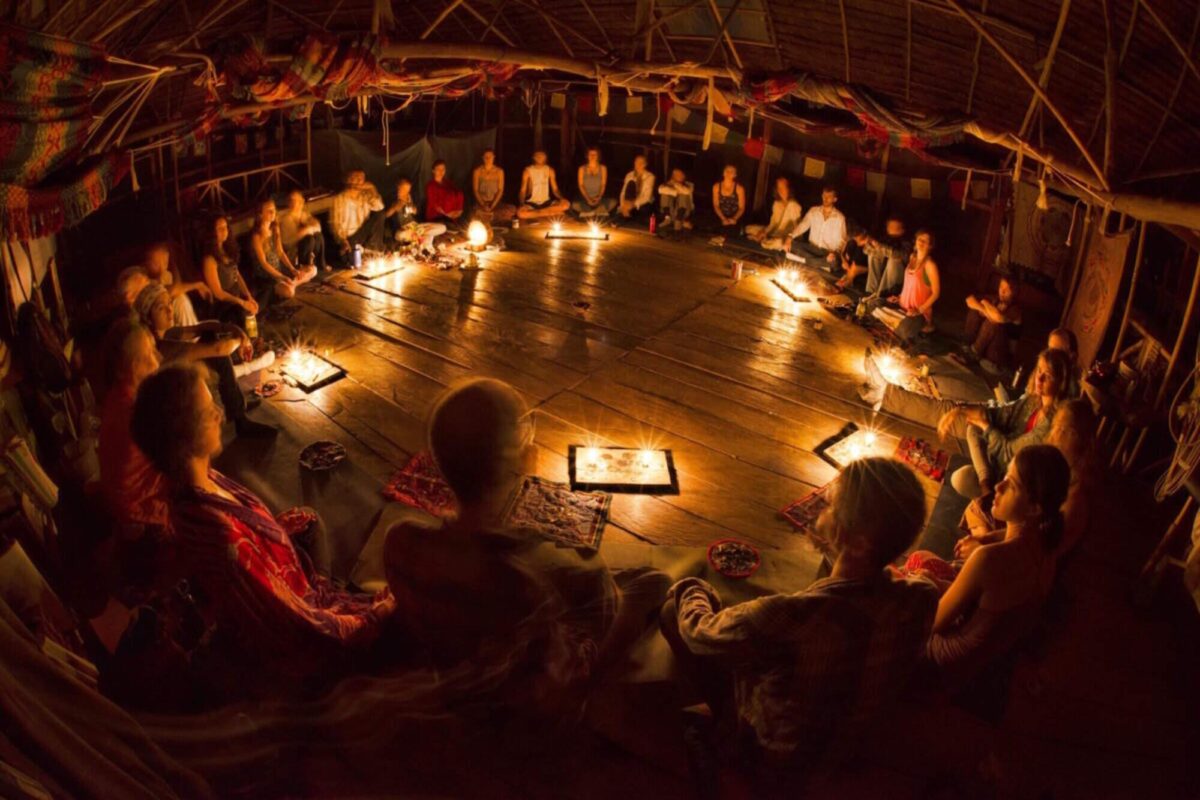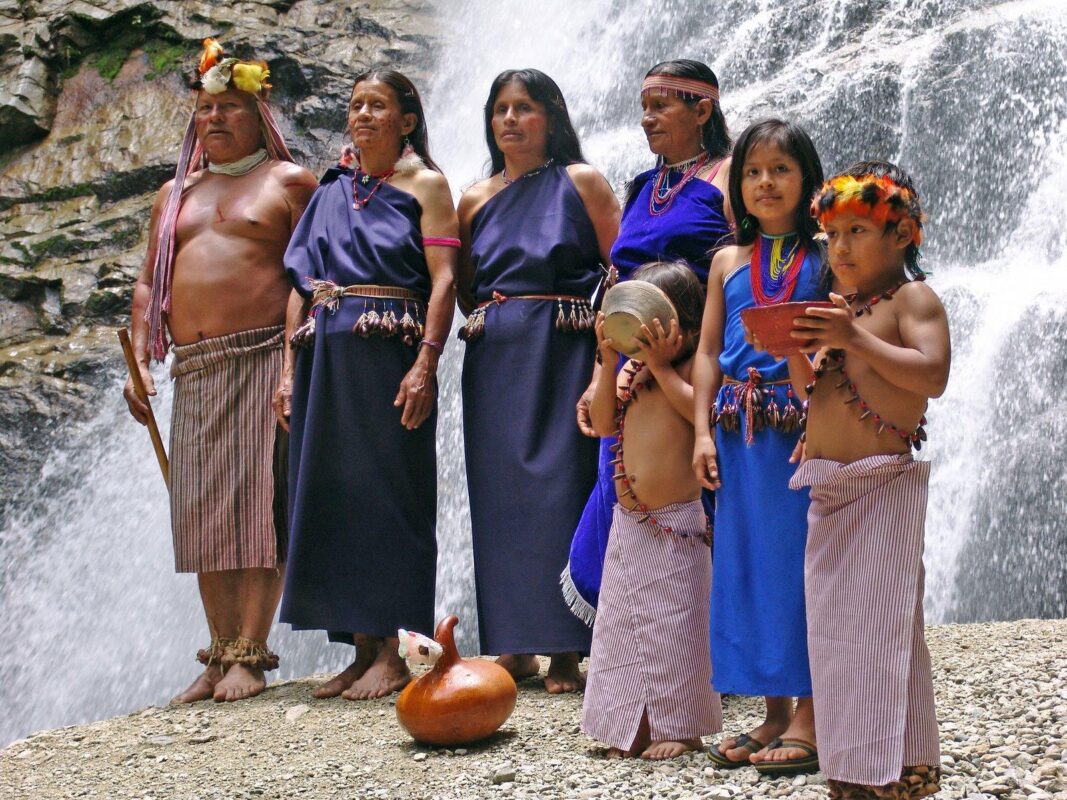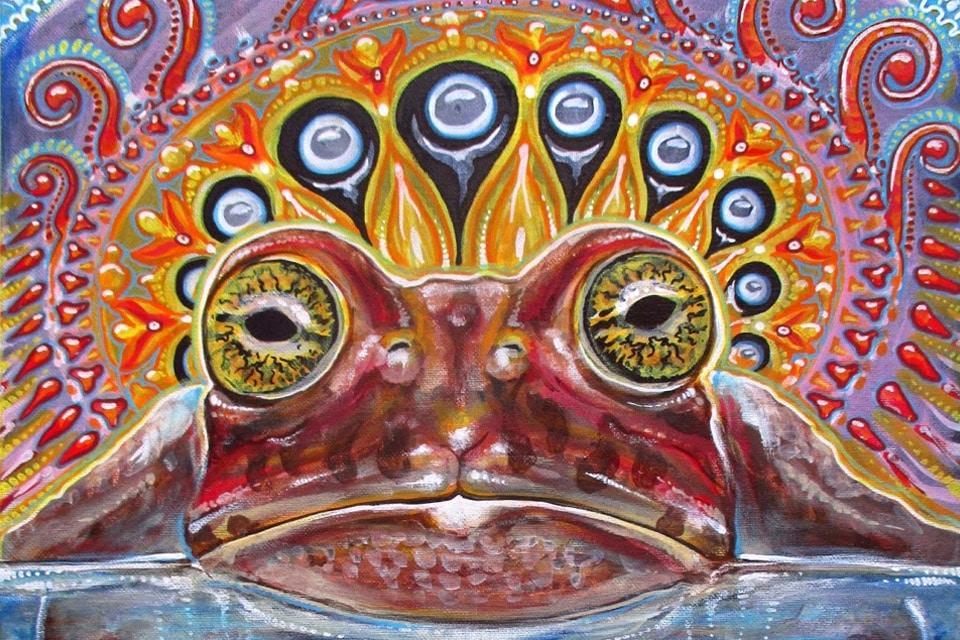Exploring traditional use and history of DMT

DMT is a naturally occurring psychedelic substance that has been used by shamanic healers and indigenous societies across the globe for centuries. In this article, we’ll explore the traditional use and history of dimethyltryptamine.
Historical context

DMT has been around for centuries, and its origins can be traced back to the indigenous tribes that lived in South America and the Amazon rainforest. These societies used DMT in shamanic practices and for spiritual purposes, believing it to have profound healing and transformative effects.
Western cultures discovered the existence of dimethyltryptamine in the late 19th century, when British chemist Richard Manske isolated the substance from the bark of a Mimosa tree. However, it wasn’t known clear until the mid-20th century when DMT began to be studied in-depth by Western scientists and researchers.
In general, historical references to the use of DMT by people can be put in such a short timeline:
Late 8th Century – Burial site in N. Chile includes bag with snuffing paraphernalia and snuff remnants containing DMT, 5-MeO-DMT, and bufotenin. Other sites include seeds of Anadenanthera spp.
905–1170 – Ritual bundle found in a funerary site in SW Bolivia contains remnants of DMT, Harmine, Bufotenine, Cocaine, and possibly Psilocin, along with snuff tablets, a snuff tube, llama bone scrapers, and a head band. The find is notable because of the presence of a number of psychoactive chemicals, as well as the combined presence of DMT and Harmine.
1496 – Friar Ramon Pane documented the use of a psychoactive snuff called cohoba/yopo among the Taino who inhabited the island of Hispaniola Haiti/Dominican Republic. It is now agreed that cohoba/yopo was almost certainly made from Anadenanthera peregrina, which has been reported to contain N,N-DMT, 5-MeO-DMT, and bufotenin.
1560 – Indians along the Rio Guaviare in Colombia take yopo along with tobacco.
16th – 19th Century – Cohoba snuff from the yopo tree used by natives of Columbia and surrounding areas.
1571 – Incan medicine men make prophecies through inebriation brought about by drinking vilca, a DMT containing preparation of A. colubrina.
1741 – A Jesuit writes about cohoba use by the native people between Colombia and Venezuela.
1801 – Baron Alexander Humboldt identified the yopo tree as Anadenanthera peregrina.
1931 – DMT first synthesized by British chemist Richard Manske and named “nigerine”.
1939 – Virola genus identified as the source of a psychoactive snuff called epena used in Amazoniana Columbia, Venezuela and Western Brazil.
1955 – n,n-DMT is identified as one of the ingredients of the A. peregrina seeds used to make cohoba snuff. This marked the first time that n,n-DMT was discovered naturally occuring in a plant or animal. Authors speculate that it is psychoactive.
1956 – First scientific publication verifying the psychoactive properties of DMT by Stephen Szara.
In general, historical references to the use of DMT by people can be put in such a short timeline:
Late 8th Century – Burial site in N. Chile includes bag with snuffing paraphernalia and snuff remnants containing DMT, 5-MeO-DMT, and bufotenin. Other sites include seeds of Anadenanthera spp.
905–1170 – Ritual bundle found in a funerary site in SW Bolivia contains remnants of DMT, Harmine, Bufotenine, Cocaine, and possibly Psilocin, along with snuff tablets, a snuff tube, llama bone scrapers, and a head band. The find is notable because of the presence of a number of psychoactive chemicals, as well as the combined presence of DMT and Harmine.
1496 – Friar Ramon Pane documented the use of a psychoactive snuff called cohoba/yopo among the Taino who inhabited the island of Hispaniola Haiti/Dominican Republic. It is now agreed that cohoba/yopo was almost certainly made from Anadenanthera peregrina, which has been reported to contain N,N-DMT, 5-MeO-DMT, and bufotenin.
1560 – Indians along the Rio Guaviare in Colombia take yopo along with tobacco.
16th – 19th Century – Cohoba snuff from the yopo tree used by natives of Columbia and surrounding areas.
1571 – Incan medicine men make prophecies through inebriation brought about by drinking vilca, a DMT containing preparation of A. colubrina.
1741 – A Jesuit writes about cohoba use by the native people between Colombia and Venezuela.
1801 – Baron Alexander Humboldt identified the yopo tree as Anadenanthera peregrina.
1931 – DMT first synthesized by British chemist Richard Manske and named “nigerine”.
1939 – Virola genus identified as the source of a psychoactive snuff called epena used in Amazoniana Columbia, Venezuela and Western Brazil.
1955 – n,n-DMT is identified as one of the ingredients of the A. peregrina seeds used to make cohoba snuff. This marked the first time that n,n-DMT was discovered naturally occuring in a plant or animal. Authors speculate that it is psychoactive.
1956 – First scientific publication verifying the psychoactive properties of DMT by Stephen Szara. [1]
Traditional use of DMT
The use of DMT in traditional shamanic practices is well-documented. Shamans have used dimethyltryptamine to facilitate communication with spiritual entities, to enter into altered states of consciousness necessary for healing, and to experience the divine. The use of DMT in shamanic practices typically involves ingesting the substance orally or brewing a tea from plants that contain DMT.
DMT has been an essential component of many indigenous societies’ spiritual belief systems. Some believe that dimethyltryptamine allows them to commune with spirits, ancestors, and even the divine. The use of DMT in these cultures is often deeply intertwined with their religious practices and rituals.
Ayahuasca – The popular traditional use of DMT

Ayahuasca is a traditional brew consumed by indigenous communities in South America. The brew contains DMT and other psychoactive substances and is prepared from the Banisteriopsis caapi vine, the Psychotria viridis shrub or a substitute, and other ingredients including Justicia pectoralis, one of the Brugmansia or Datura species, and mapacho. The brew is consumed during spiritual ceremonies and has been used for centuries for various purposes.
Drinking ayahuasca is said to induce a transformative experience and help individuals gain insight into their lives and the universe in ways that are difficult to achieve otherwise. Ayahuasca ceremonies often involve chanting, prayer, and other spiritual practices. Many people who have experienced ayahuasca describe it as a life-changing experience that has helped them overcome trauma and gain a new perspective on their lives.

Ayahuasca has also gained popularity among mainstream society in recent years, with many people traveling to South America to participate in ayahuasca retreats. These retreats often aim to provide a safe and controlled environment for people to experience ayahuasca and explore its potential benefits.
A substance referred to as “pharmahuasca”, which shares similar chemical properties, can be created by combining N,N-Dimethyltryptamine with a monoamine oxidase inhibitor used in pharmaceuticals, such as moclobemide or isocarboxazid.
The Shuar – DMT used for hunting and survival

The Shuar tribe of Ecuador has a long history of using dimethyltryptamine as part of their hunting practices. The Shuar ingest dimethyltryptamine by drinking a fermented beverage called “Natem” before hunting. The DMT is believed to improve their sensory perception and help them track animals in the jungle.
The Shuar also believe that drinking Natem can help protect them from harm during hunting expeditions. The beverage is often consumed in a ceremonial setting and is considered sacred by the Shuar tribe.
While the use of DMT has declined among the Shuar in recent years, it still holds significant cultural and spiritual importance in their community.
Modern history of DMT
DMT was often used as part of religious ceremonies and was believed to help people connect with a higher power. It was also used recreationally by those seeking mind-altering experiences.

One researcher who has contributed significantly to our understanding of dimethyltryptamine is Dr. Rick Strassman. Strassman’s groundbreaking research in the 1990s involved administering DMT to human volunteers in a clinical setting to study the effects of the compound on the human body and mind.
Strassman’s research has provided valuable insights into the effects of DMT and has paved the way for further studies on the compound and its potential therapeutic benefits.
Conclusion

The traditional use and history of DMT are fascinating topics that provide insight into the significance of this powerful compound in various cultures around the world. From ayahuasca ceremonies to the hunting practices of the Shuar tribe, dimethyltryptamine has played an important role in the spiritual, cultural, and medicinal practices of many societies. By exploring these traditions, we can gain a better understanding of the potential benefits of DMT and how it can be used to improve our lives.

